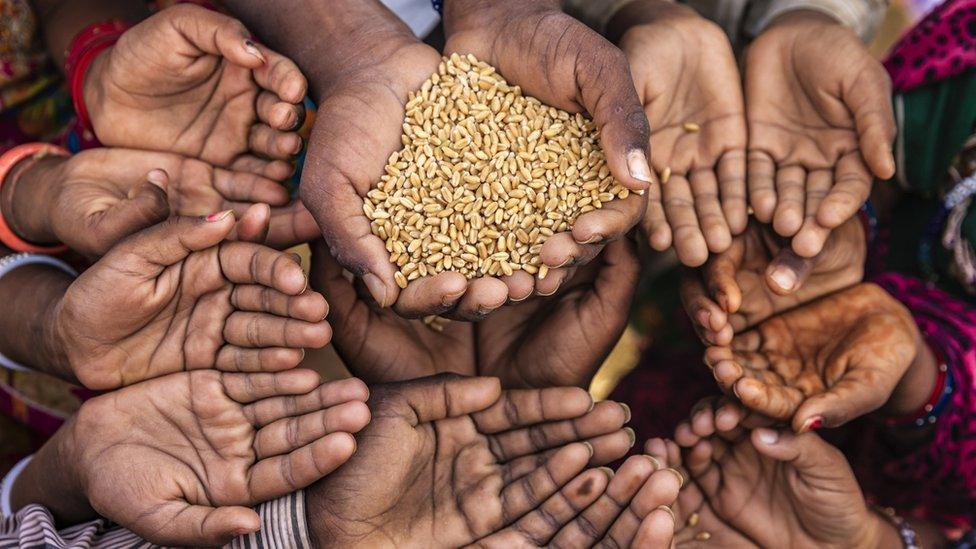World hunger: Almost 700 million people are going hungry worldwide according to a new report
- Published
- comments

The number of people going hungry has been rising over the last five years
Around 690 million people went hungry last year according to new evidence.
The State of Food Security and Nutrition in the World is a yearly report produced by five United Nations (UN) organisations including the United Nations Children's Fund (UNICEF) and the World Health Organization (WHO). It provides the latest figures on hunger and malnutrition throughout the world.
The report reveals that the number of people who went hungry in 2019 is around 10 million more than the previous year and nearly 60 million more than five years ago.
World hunger in numbers
690 million went hungry in 2019
8.9% of people are hungry globally
19.1% of people in Africa suffer from hunger
2 billion people are unable to access food that is safe and nutritious all year-round
57% of people in Sub-Saharan Africa and southern Asia aren't able to afford a healthy diet
840 million could be hungry in 2030 if the current trend continues
Around two billion people around the world are also said to be food insecure. This means they aren't able to get access to enough safe and nutritious food all year round.
It's believed tcoronavirus will affect the number of hungry people in 2020 because of its impact on the production and distribution of food.
What do the latest figures mean for world hunger?
The UN launched the Zero Hunger challenge back in 2015. The aim of the challenge is to bring an end to world hunger, improve nutrition and food security and to get more people farming in sustainable ways by 2030.
However, the latest figures show the world has still got a very long way to go when it comes to achieving these goals.
Asia has the highest number of people going hungry, with the current figure standing at around 381 million. 250 million people suffer from hunger in Africa, with a further 48 million in Latin America and the Caribbean.
What about the types of food people are eating?
Foods like dairy, fruit and vegetables are too expensive for lots of people around the world
Another big issue highlighted by the UN's latest food report is the impact of unhealthy diets.
Making sure people have enough to eat is important, but it's also vital that people are eating the right types of food.
However, according to the latest findings, at least three billion people aren't able to afford a healthy diet. Many families end up turning to unhealthier options which tend to cost a lot less.
Dairy, fruits, vegetables and protein-rich foods like animal products are recognised as the most expensive food groups globally and healthy diets are estimated to be approximately five times more expensive than diets mainly consisting of starchy foods like rice and maize.
What needs to be done next?
The report suggests that governments need to support those producing crops on a smaller scale
The report is calling for big changes to be made to current food systems around the world. It wants governments to make good nutrition a key part of their approach to how food is produced. It also wants them to focus on cutting costs in the production, storage, transportation and distribution of food that can cause prices to sky rocket.
It's suggesting that more should be done to support small scale producers like local farmers to help them grow and sell more nutritious food and also says that more needs to be done to prioritise children's nutrition.
Education and communication are highlighted as two big factors that will help lead to a change in people's behaviours, with the aim of eventually bringing about more long-term change.
- Published2 June 2022
- Published14 June 2019
- Published3 September 2019
